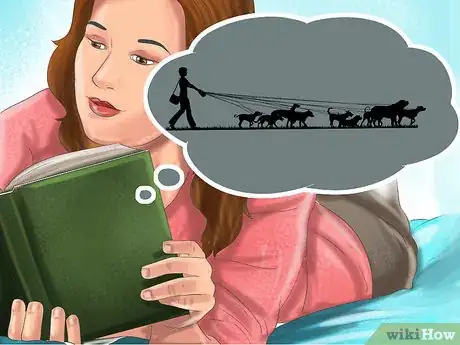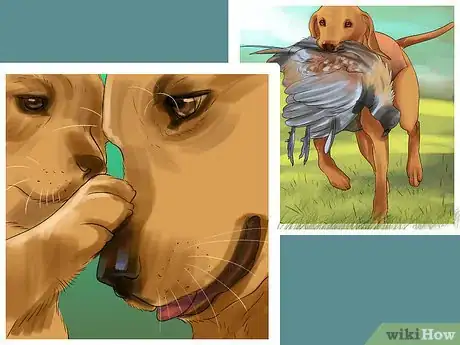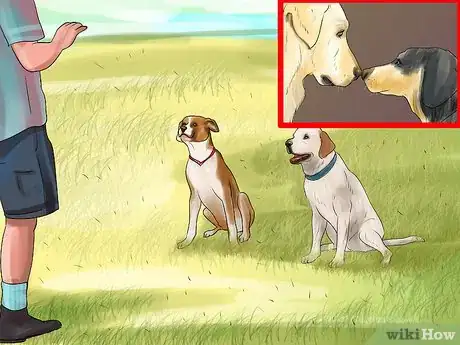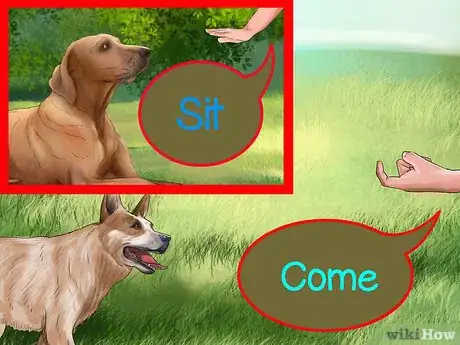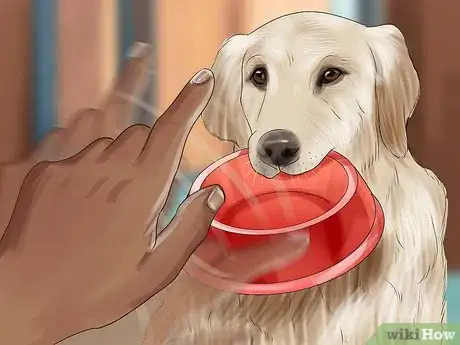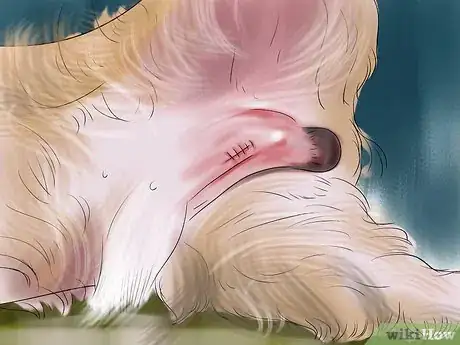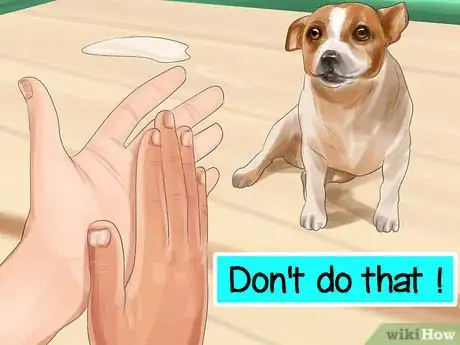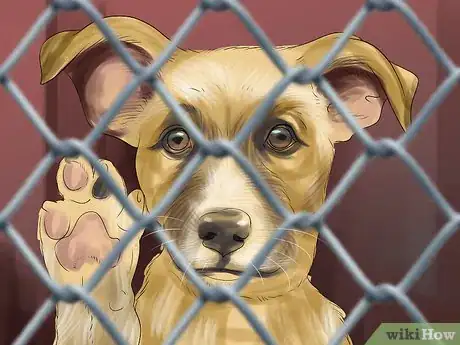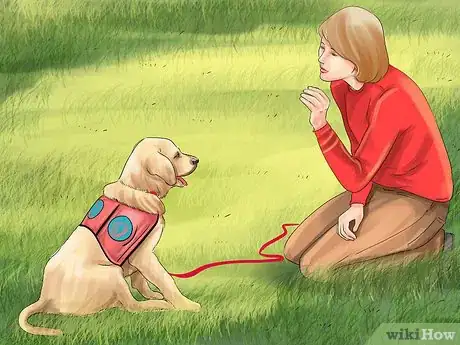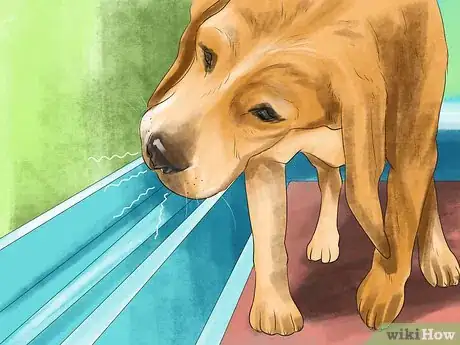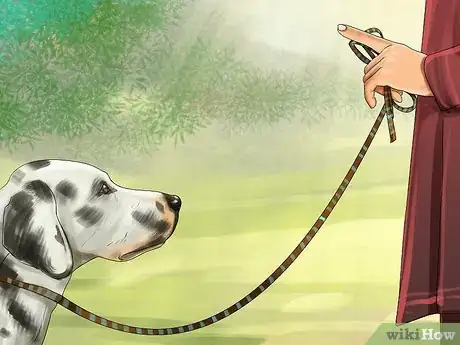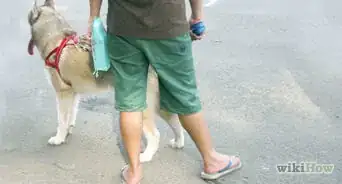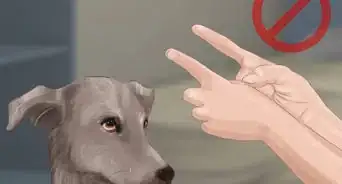This article was co-authored by Indigo Will. Indigo Will is a Canine Expert, Trainer, and Founder and Owner of K9-INDIGO® Holistic Dog Training LLC™, a dog training service in Los Angeles, California. Indigo specializes in understanding canine temperament and dispositions to allow canines to reach their full potential. He has studied various methods of training and philosophies to develop a unique, innovative, and result-driven method for canine behavior training.
There are 12 references cited in this article, which can be found at the bottom of the page.
This article has been viewed 15,680 times.
When trying to understanding dog pack dynamics, it's important to learn how dogs and humans have coexisted over thousands of years. As a result, dogs don't live in packs based on survival and hunting like other animals. Instead, their social dynamics are more complex and more like those of humans. Get to know the specifics about dog interactions in order to offer the best training, deal with undesirable behaviors, and manage your multi-dog household.
Steps
Refuting Myths About Pack Dynamics
-
1Learn about the origins of the pack concept. The pack concept is more than a century old, but most modern behavioral scientists argue that the term simplifies dog social dynamics. In the past, the pack was thought of as a militaristic hierarchy defined by dominance and aggression. Nowadays, professional trainers and behavioral researchers advocate a more complex understanding of how dogs interact with humans and each other.[1]
- Since dogs and humans have evolved together for many thousands of years, dog social structures are more comparable to those of humans than they are to wolves and other animals.[2]
- Given these advancements in research, rewards-based training routines based on positive reinforcement are generally preferred over training based on dominance and punishment.
-
2Understand the differences between “pack” and “family.” By focusing too much on the idea of a pack, you might risk overlooking important specific factors. Focus on how you, your pets, and other members of your household form a particular family. Where a pack might be based on elements of survival, like hunting, you and your dog’s family involves more complicated inter-species interactions.[3]
- In terms of training, stressing “pack” over “family” often involves force, intimidation, and similar techniques that have fallen out of favor among professional dog behaviorists.
- To understand dog social dynamics and offer your dog the most effective training, it’s important to consider specifics, including your dog’s personality, history, and breed or breed mix. When training or socializing your dog put nuances, such as whether your dog has a history of neglect or anxiety, ahead of trying to be the authoritative alpha.[4]
Advertisement -
3Remember that your dogs know you’re not a dog. Even if dogs and humans have co-evolved for millennia, they are nonetheless different species. Your dog can understand that you’re not a dog, and that you’re not just animals hunting and living in a pack. Therefore, you should think of your “pack” in more complicated terms, especially when training and socializing your dog.[5]
- Recent behavioral research has shown that your dog isn’t trying to be a “pack alpha” when it misbehaves. Rather, it’s either responding negatively to situations it associates with stress or acting in ways it thinks will result in rewards, like food or attention.[6]
Dealing with Undesirable Behaviors
-
1Train your dogs using rewards and reinforcement. Since dog pack dynamics are more complicated than competing to be alpha, a form of training called operant conditioning has become preferred over dominance or punishment-based training. Operant conditioning is when you use rewards, like treats and verbal encouragement, to modify your dog’s behavior.[7]
- For example, when teaching your dog command words, like sit or come, you should first say the command, then physically guide your dog into the appropriate position, and immediately give it a treat. Repeat the process around twenty times per training session, eventually substituting the treat for exaggerated verbal praise and petting.
- The key when giving a treat to your dog is to do so in the exact moment it does something correctly. If it sits and you immediately offer a treat, it will come to associate following the command with a reward.
-
2Place consistency over punishment. Consistency is the most important consideration when setting rules for your “pack.” For example, more trainers and behaviorists now advise that allowing a dog to lay on your bed or sofa is a personal choice that won’t really affect the dog’s general discipline. However, if you do choose not to allow your dogs on furniture, you should stick to the rule and never allow an exception.[8]
- Likewise, if you don’t want your dog to beg for food, don’t give it any attention whatsoever if it begs while you’re eating. Don’t make any exceptions that might make it expect food off your plate.
- While consistency is essential to establishing social dynamics and house rules, punishment is less effective. Humans can associate an action with a punishment regardless of time, but dogs cannot. If your dog has an accident inside or chews something up, punishing it after the behavior will have no effect. It can’t make an association between the bad behavior and you yelling or spanking it, even if just several minutes after the fact.
-
3Spay or neuter your dogs. One of the most effective and easiest ways to control your dog’s behavior is to spay or neuter it. This will reduce its aggressiveness, territorial instincts, and urge to urine mark. You should consider spaying or neutering especially if you have children or a multi-dog household.
- While spaying or neutering and other forms of preventive care can be costly, they’re typically more affordable and convenient than dealing with a pregnancy or health condition. If cost is an issue, call your local animal shelter and ask them, “Are there any local financial aid programs that can help me get my dog spayed or neutered?”
-
4Prevent urine marking. One of the most common nuisances associated with pack or social dynamics is urine marking. Your dog is territorial, and if you have a human or animal visitor in your home, it might respond by urinating indoors. Clean up any marked spots with a pet odor eliminator, and keep items it’s likely to mark, like your guest’s belongings, in a room with a closed door.[9]
- If you notice your dog lifting its leg or marking, get its attention by shouting or clapping, and tell it, “No! Don’t do that!” It’s important to stop it in the exact moment the marking or accident occurs so the dog understands your intentions. Take it outside if it hasn’t had a walk in a while and needs to relieve itself.
- Remember that punishment after the fact won’t have any effect. If you’ve come home and found your dog has gone to the bathroom inside, it won’t understand why you’re rubbing its nose in the spot or yelling at it.
- If your dog is potty trained but begins to routinely empty its bladder (as opposed to mark with a little urine) or defecates indoors, there might be a more significant issue. Take to the vet for a checkup, and ask the vet about possible incontinence or anxiety issues.
- Reward your dog for marking outside instead of inside so it learns where it's okay to mark.[10]
-
5Deal with aggressive behavior. Generally, dog trainers and behaviorists suggest that aggressive behavior has less to do with your dog trying to assert itself as an alpha. Instead, your dog is more likely responding to conditions it’s come to associate with danger or stress. Alternatively, it could be acting in a way that has resulted in a reward in the past.[11]
- Try to pay attention to specific conditions when your dog misbehaves. It might take time and patience, but if you can identify why exactly your dog misbehaves you’re more likely to offer a long-term solution.
- Try to apply the methods of operant conditioning. For example, if you can safely ignore your dog when it’s barking or showing aggression, do so. When it displays calm behavior in response to something new, offer a small food treat or pet it and offer plenty of encouragement. Over time, it will associate barking or jumping with being ignored and calmer behavior with attention.[12]
- Avoid trying to pet or play with your dog when it's showing signs of aggression. Read its body language—bared teeth and raised fur, for example, are signs that your dog is feeling aggressive.[13]
-
6Consider if your dog has been neglected or abused. Aggressive or unruly behavior could be due to a history of neglect or abuse. Your dog might have previously had success warding off a threat through aggression.
- If this is the case, try to limit exposure to new animals and people. Try to offer it plenty of positive reassurance with a reassuring tone of voice.
- Ask its vet if they recommend medication for anxiety, and consider seeking help from a professional trainer if aggressive behavior persists.
Managing a Multi-Dog Household
-
1Teach your dog to associate new things with positivity. Start socialization as early as possible in order to train your dog to be open to additional “pack” members later down the road. When you start getting your dog used to new sights and smells, give it a small food treat when it comes into contact with the new person or animal.
- Start socializing your puppy as soon as you bring it home, especially if you plan on getting a new dog or cat in the future. Puppies are more receptive to socialization than older dogs, but dogs of any age can be trained through proper conditioning. If a visitor comes to your home, have them offer the dog a treat so it identifies your guests with positivity.
-
2Introduce your dogs gradually and on neutral territory. In addition to preparing your dog for social situations in general, you should take careful steps when introducing it to your new dog. Your “pack’s” dynamics in the long run will depend on a successful introduction.[14]
- Introduce them gradually, starting with the sense of smell. Offer the dogs scent articles so they can get used to each other’s scents before making visual contact.
- When they do make visual contact, do it on neutral ground, like a neighbor’s yard or park. Don’t force them to stand face to face. Allow them to show each other their profiles, walk around each other, and sniff.
- Next, separately bring them to your own yard, and allow them to meet for a few minutes on your territory. If all goes well so far, bring them inside separately and keep them out of each other’s sight in closed rooms or crates. Let one out at a time, starting with the new dog. Let it explore the house. Then, put it back in its crate or closed room, and allow the old dog to explore. Finally, let them both out simultaneously inside the house.
- Continue to monitor how they interact within the house. Keep them separated during the initial weeks using a sturdy baby gate if necessary. Keep them crated out of sight or in rooms with closed doors while they’re unattended.
-
3Take the time to work on individual training. As you add dogs to your household, remember that each is most likely at a different level of training. In order to foster the best social dynamics, you should be patient and work with each dog as an individual. Spend extra time gradually conditioning each dog based on their needs.[15]
- For example, if one dog is less tolerant of other members of your household, begin by instructing it to sit while another dog or family member stands behind a baby gate. Offer a treat if it remains calm. Next, remove the gate but keep the dog or person at the same distance, and again reward calm behavior. If working with two dogs, keep them leashed just in case. Proceed using the same method at shorter and shorter distances.
-
4Ask for help handling your dogs if necessary. Try not to be discouraged or reluctant about asking for help from a vet or trainer. Understand that some dogs simply don’t respond well to family environments or social situations.[16]
- Ask a vet about anxiety medications or other recommended solutions. Ask them to recommend a trainer who can help it get along better with your other dogs or family members.
- Try to get to know your dog before acquiring another pet. If it has trouble getting along with others despite training from you or a professional, try to accept its personality as it is. Some dogs are simply not social, and you should do your best to love it no matter what instead of creating a potentially unsafe environment.
Expert Q&A
Did you know you can get expert answers for this article?
Unlock expert answers by supporting wikiHow
-
QuestionWhat's the best way to socialize my dog?
 Indigo WillIndigo Will is a Canine Expert, Trainer, and Founder and Owner of K9-INDIGO® Holistic Dog Training LLC™, a dog training service in Los Angeles, California. Indigo specializes in understanding canine temperament and dispositions to allow canines to reach their full potential. He has studied various methods of training and philosophies to develop a unique, innovative, and result-driven method for canine behavior training.
Indigo WillIndigo Will is a Canine Expert, Trainer, and Founder and Owner of K9-INDIGO® Holistic Dog Training LLC™, a dog training service in Los Angeles, California. Indigo specializes in understanding canine temperament and dispositions to allow canines to reach their full potential. He has studied various methods of training and philosophies to develop a unique, innovative, and result-driven method for canine behavior training.
Professional Canine Expert Typically what I do is bring the dog around a lot of other canines, starting at a young age preferably. I make sure that the experience is always fun, whether it's a quick meet and greet or a longer play session. I want to be able to take them around other dogs and not have them react. I want them to be neutral.
Typically what I do is bring the dog around a lot of other canines, starting at a young age preferably. I make sure that the experience is always fun, whether it's a quick meet and greet or a longer play session. I want to be able to take them around other dogs and not have them react. I want them to be neutral.
References
- ↑ https://www.psychologytoday.com/blog/canine-corner/201007/canine-dominance-is-the-concept-the-alpha-dog-valid
- ↑ https://www.ncbi.nlm.nih.gov/pmc/articles/PMC2251326/
- ↑ http://www.canismajor.com/dog/packdyn.html
- ↑ https://www.ncbi.nlm.nih.gov/pmc/articles/PMC2251326/
- ↑ https://positively.com/dog-training/myths-truths/pack-theory-debunked/
- ↑ https://www.ncbi.nlm.nih.gov/pmc/articles/PMC2251326/
- ↑ https://positively.com/victorias-blog/what-makes-a-leader/
- ↑ http://www.vcahospitals.com/main/pet-health-information/article/animal-health/dog-behavior-and-training-dominance-alpha-and-pack-leadership-what-does-it-really-mean/4947
- ↑ http://www.humanesociety.org/animals/dogs/tips/prevent_urine_marking.html?credit=web_id110528407
- ↑ Indigo Will. Professional Canine Expert. Expert Interview. 8 September 2020.
- ↑ https://positively.com/victorias-blog/why-are-dogs-aggressive/
- ↑ https://www.animalhumanesociety.org/training/counter-conditioning-and-desensitization
- ↑ Indigo Will. Professional Canine Expert. Expert Interview. 8 September 2020.
- ↑ http://www.humanesociety.org/animals/dogs/tips/introducing_new_dog.html?credit=web_id110528407
- ↑ http://aspcapro.org/sites/default/files/aspca_webinar_slides_Multi-Dog_Household.pdf
- ↑ http://www.humanesociety.org/animals/dogs/tips/introducing_new_dog.html?credit=web_id110528407
About This Article
If you want to understand how dog pack dynamics work, research how scientists’ understanding of dog social behaviors has changed in recent years. For example, while early theories focused on ideas of dominance and aggression within the pack, animal behavior specialists now believe that packs are more like human families, with a less clearly defined hierarchy. When you’re training your dog, remember that it realizes that you aren’t a dog and doesn’t expect you to behave like a “pack alpha.” Instead of focusing on disciplining your dog and trying to be the boss, train your dog using rewards and positive reinforcement. For advice on training your dog or managing a multi-dog household using your understanding of pack dynamics, keep reading!
